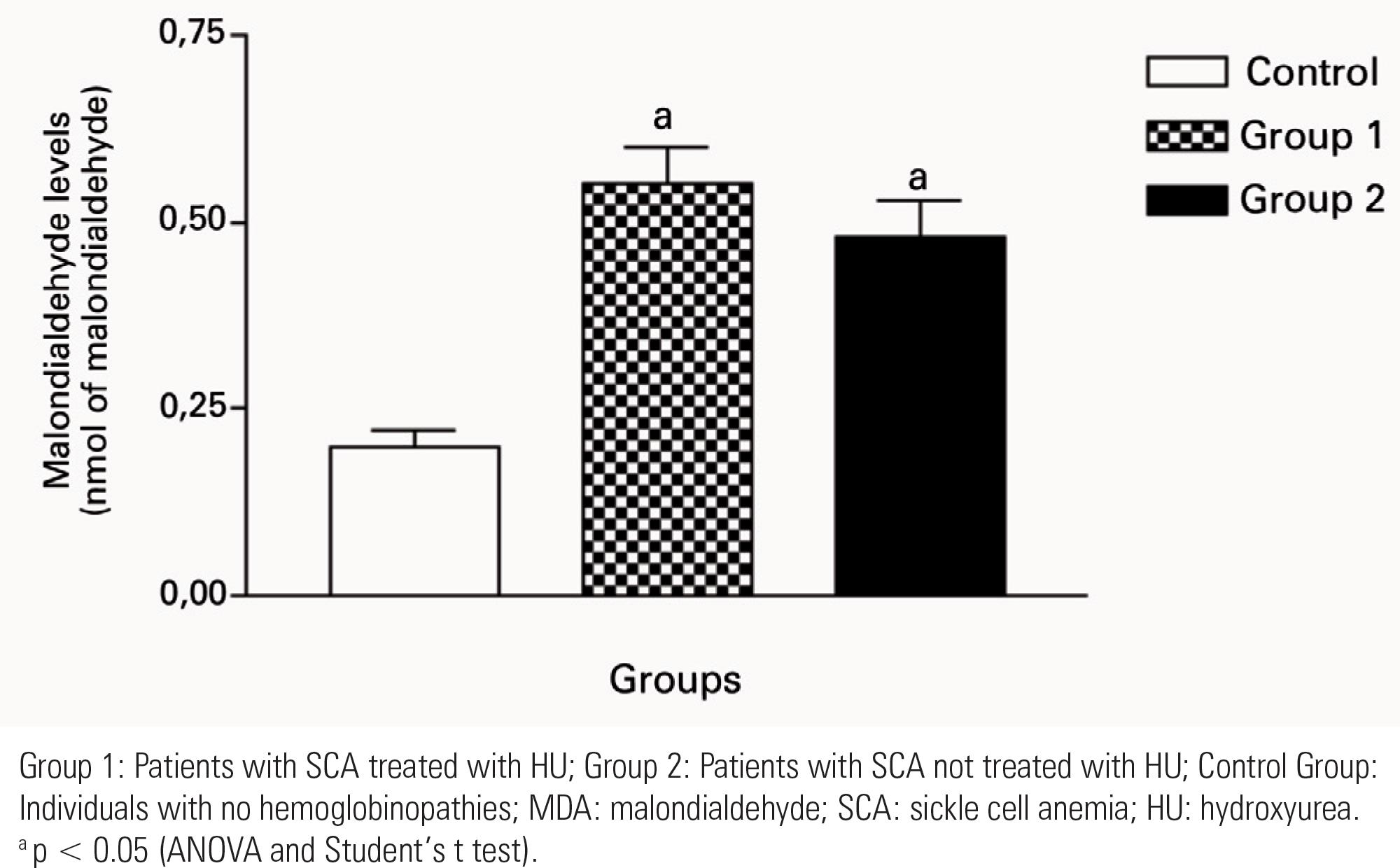ABSTRACT
Objective:
To determine the serum levels of malondialdehyde and nitrite in patients with sickle cell anemia treated or not with hydroxyurea in outpatient's setting.
Methods:
Of the 65 patients with sickle cell anemia selected for the study, 51 were not treated with hydroxyurea (Group 1), 14 made chronic use of hydroxyurea (Group 2) and 20 individuals had no hemoglobinopathies (Control Group).
Results:
The Control Group had a lower and more homogeneous concentration of malondialdehyde levels as compared to the other groups. The results of Groups 1 and 2 showed increased values of malondialdehyde levels when compared to the Control Group. Considering the values of Groups 1 and 2, there were no significant changes in the malondialdehyde levels. There was no significant difference in the serum levels of nitrite between the groups. Group 2 presented a statistically significant correlation between serum malondialdehyde levels and the clinical variables investigated. In turn, Group 1 showed correlation only with occurrence of three or more vaso-occlusive crises. There was no correlation between nitrite levels and the clinical variables.
Conclusion:
The results revealed that during the pathogenesis of sickle cell anemia, an increase in lipid peroxidation was observed. On the other hand, no changes in oxidative parameters were detected during treatment with hydroxyurea, probably due to the short period of treatment of the patients studied.
Keywords:
Anemia, sickle cell/drug therapy; Malondialdehyde; Thiobarbituric acid reactive substances; Nitrite; Oxidative stress; Hydroxyurea/therapeutic use

